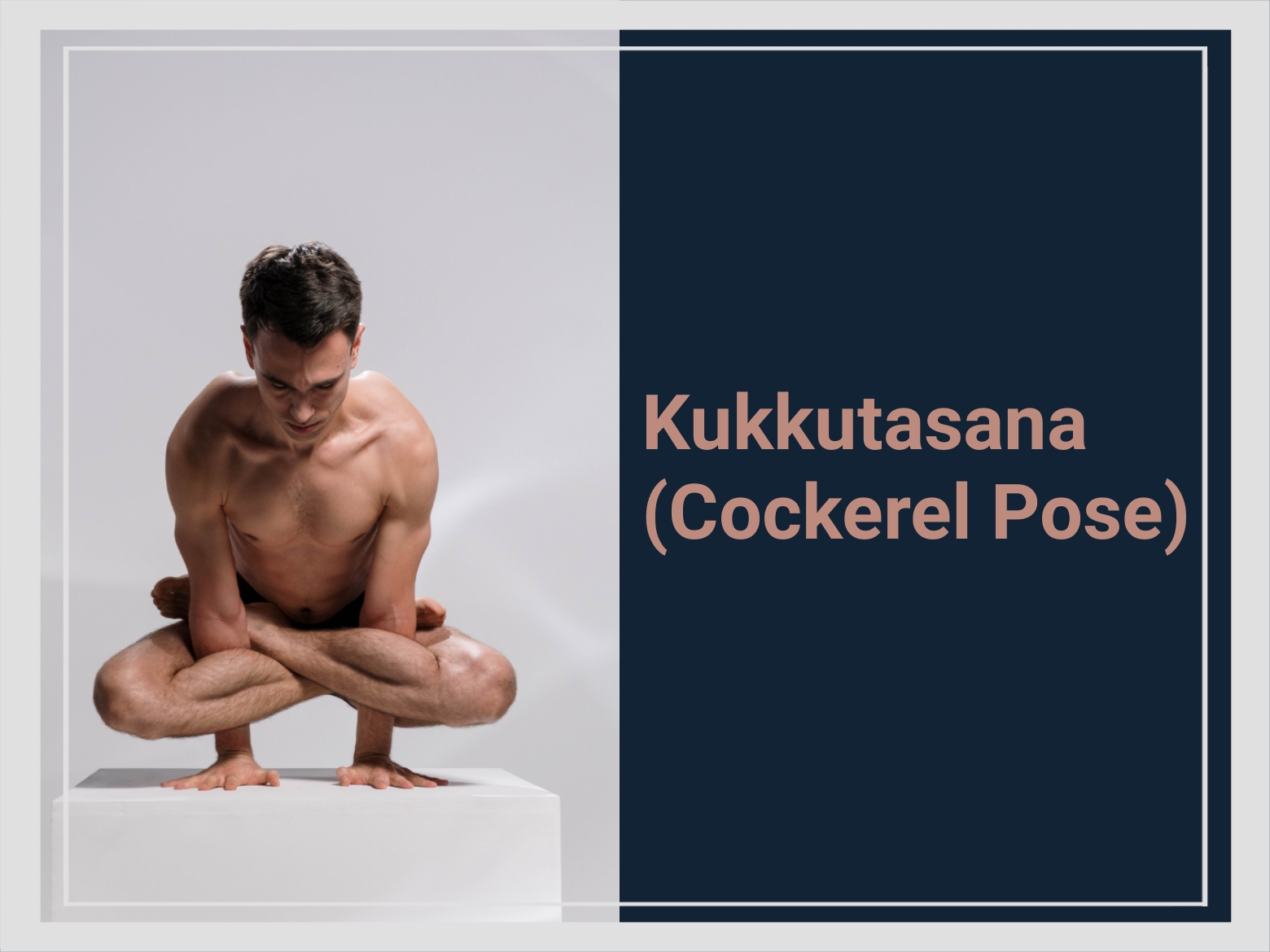What is Kukkutasana?
Yoga is beneficial for solving all the problems at mental and physical level. By practicing yoga regularly, you can eliminate many diseases of the human body and can also increase mental stress and energy.
For happiness and peace in life, along with a strong body, a strong mind is also required. Experiencing the emotional body can make life easier and happier.
Yoga has dozens of easy poses, divided by body position. In this article we will tell you what is Kukkutasana, the benefits of doing Kukkutasana, the right way to do it, method and precautions.

While doing this asana, the position of the seeker becomes like that of a chicken. Therefore it has been named ‘Kukkutasana’.
Sit in Padmasana. Take both hands out from between the thighs and calves and place them on the ground. Keeping both the palms on the ground, raise the body in the air. In Padmasana itself, the body will rest on the elbows. This is called Kukkutasana.
How to do Kukkutasana?
1.) Sit in Padmasana.
2.) Taking the hands between the calves and thighs near the knees, slowly take the arms out from between the legs till the elbows.
3.) Keep the palms firmly on the ground in such a way that the fingers remain facing forward.
4.) Keeping the hands straight and the eyes fixed on any point in front, raise the body above the ground.
5.) The entire body remains balanced only on the hands.
6.) Keep your back straight.
7.) Remain in the final position as long as you can comfortably, then come back to the ground and slowly relax the arms, hands and legs. Repeat this exercise by changing the position of the legs.
breathing-
Exhale while raising the body. Breathe normally in the final position. Exhale while bringing the body down.
Awareness-
Focus your awareness on breathing in and out of the nostrils and maintaining balance. In this, the center of perception is the Muladhar Chakra.
important-
Arms and wrists should be able to bear the weight of the body. For those who have a lot of hair on their legs, the process of removing the hands from between the calves and thighs can be difficult and painful. The process becomes easier if oil is applied to the feet or hair on the feet is removed. Those who have more fat or muscles in their legs also have difficulty in this asana.
Benefits of Kukkutasana
♦ The muscles of the arms and shoulders get strength from this asana.
♦ The chest expands.
♦ It loosens the joints of the legs and develops a sense of balance and stability.
♦ Due to stimulation of Muladhara Chakra it is used for Kundalini awakening.
♦ This is a particularly useful exercise in curing diseases related to shoulders, arms, chest, lungs and heart.
♦ This easily strengthens the wrists, shoulders and arms.
♦ The fat of the abdominal muscles starts reducing.
♦ Moolabandha action takes place, which provides relief in piles, constipation etc.
♦ The practitioner’s resolve becomes stronger and self-confidence increases.
Precautions for Kukkutasana
♦ While lifting body weight, put equal amount of weight on both the palms.
♦ Don’t do anything impulsively.
♦ If you keep your eyes focused towards the front, it will be easier to balance.
Frequently Asked Questions
What is the history of Kukkutasana?
Kukkutasana, is another yoga asana with a historical foundation in traditional yogic texts. The pose is mentioned in ancient scriptures such as the Hatha Yoga Pradipika and the Gheranda Samhita, which date back several centuries.
What is the duration of Kukkutasana?
The duration for holding Kukkutasana, can vary based on an individual's strength, flexibility, and experience level. Generally, in a yoga practice, poses are held for a duration of 15 seconds to a minute, and advanced practitioners may extend the time.
What is the world record for Kukkutasana?
I recommend checking with official yoga organizations, Guinness World Records, or recent reliable sources for the most up-to-date information on this topic.
What is the anatomy of Kukkutasana?
Kukkutasana, also known as Rooster Pose or Cock Pose in yoga, primarily engages the muscles of the arms, core, and hip flexors.
Read Also
- Benefits of Tadasana & How to Do it
- How to do Vrikshasana(Tree Pose)- Benefits, Precautions & Steps
- Shirshasana(Headstand) Benefits, Steps & Precautions
- Mandukasana(Frog Pose)-Steps And Benefits